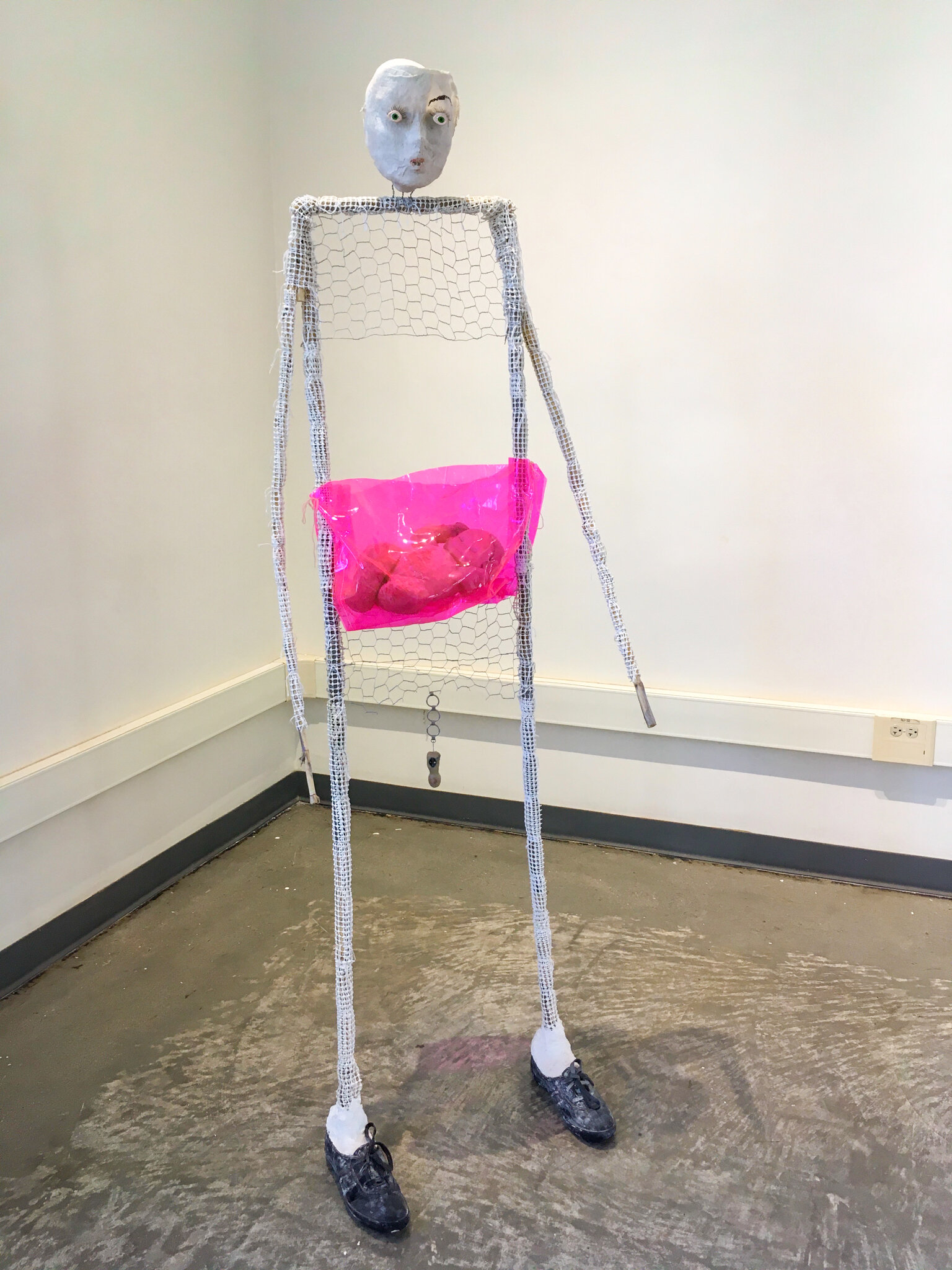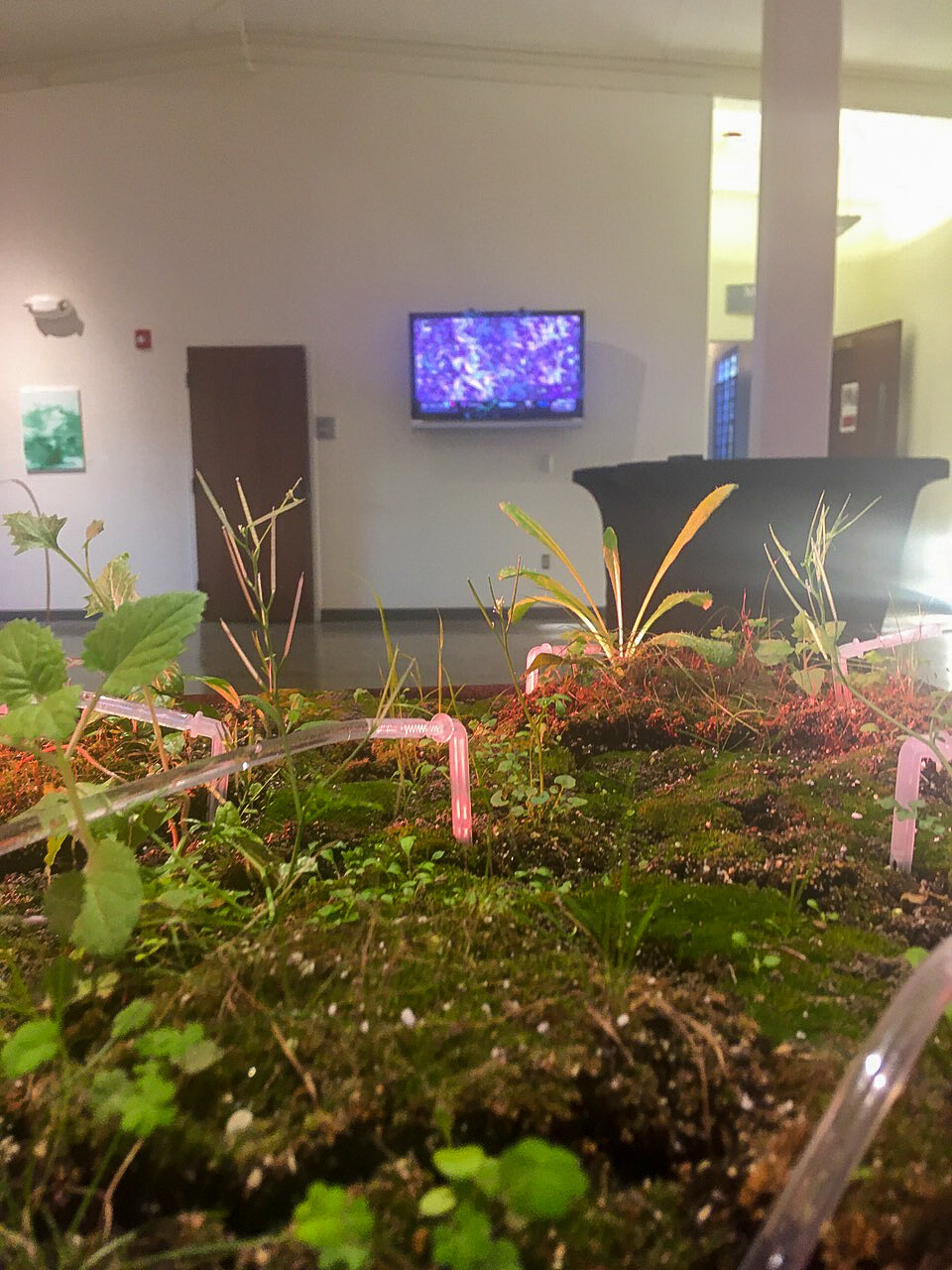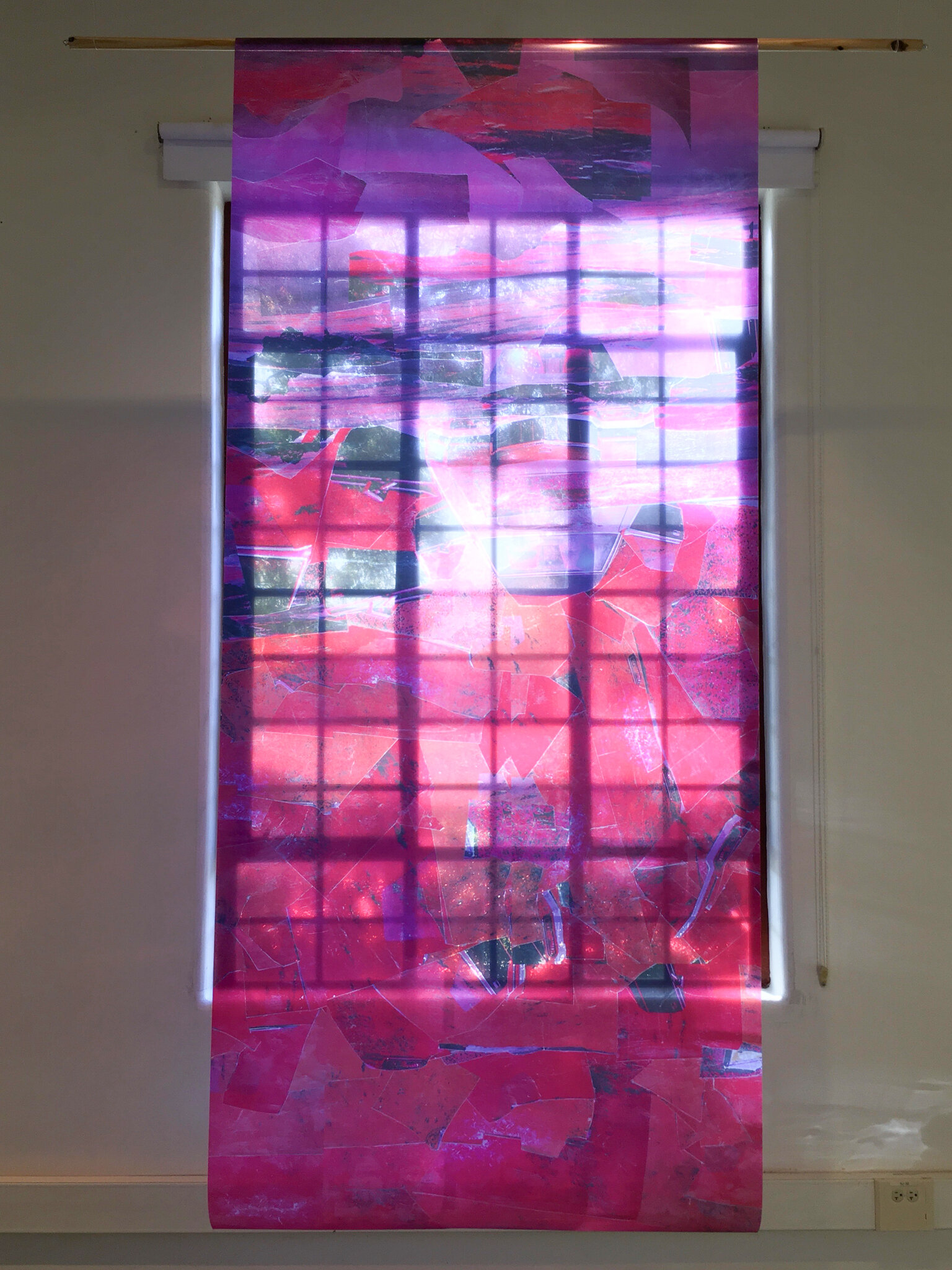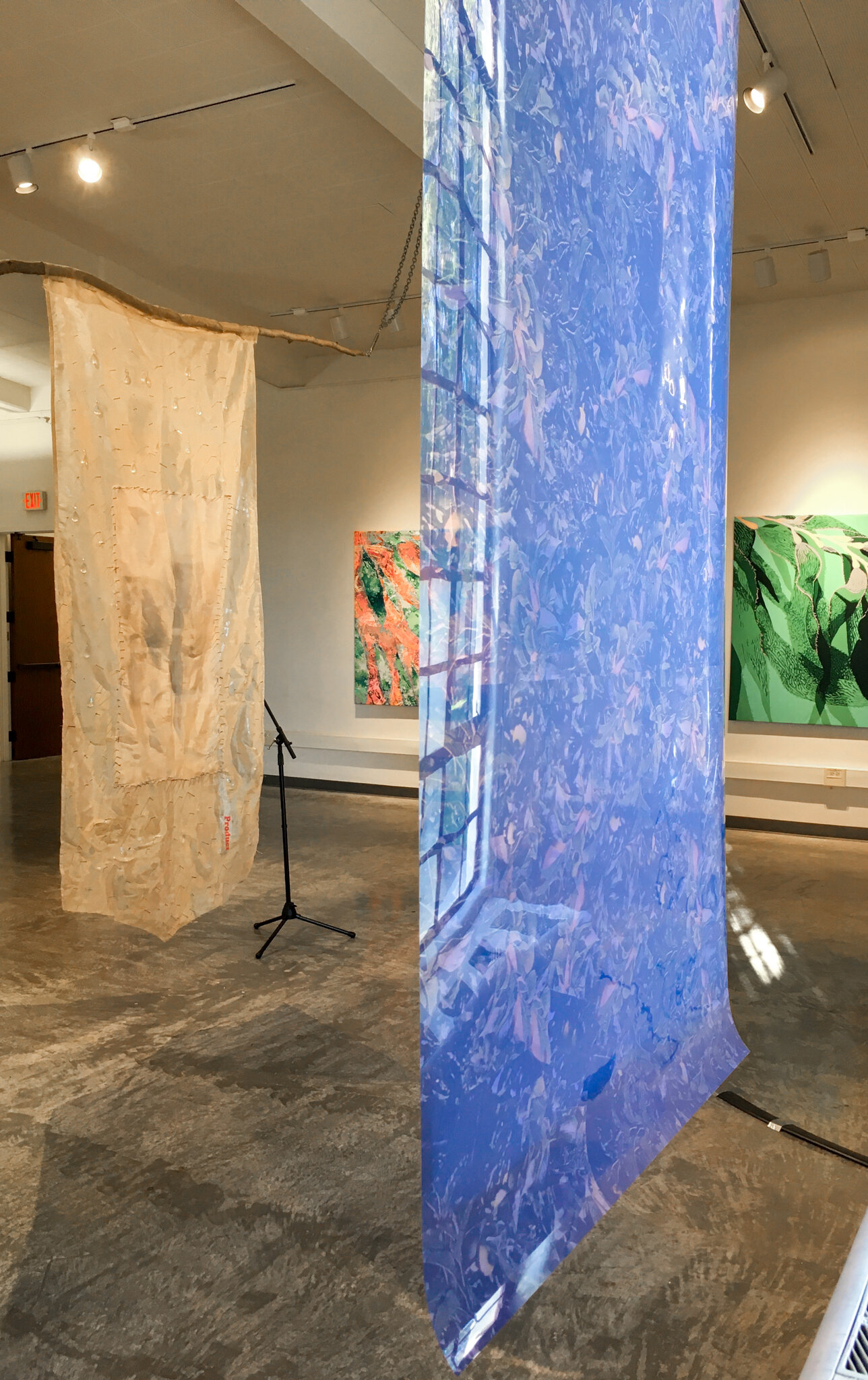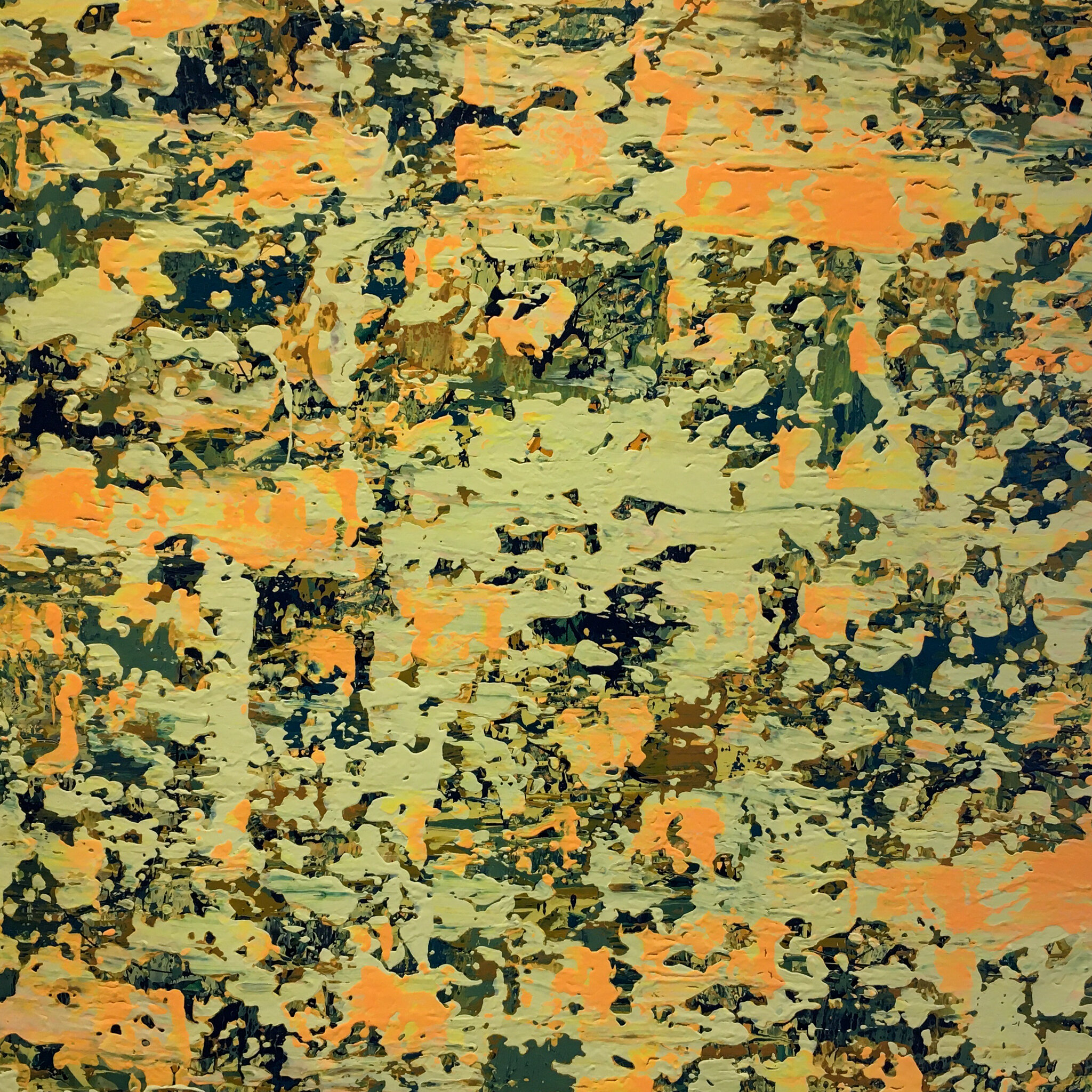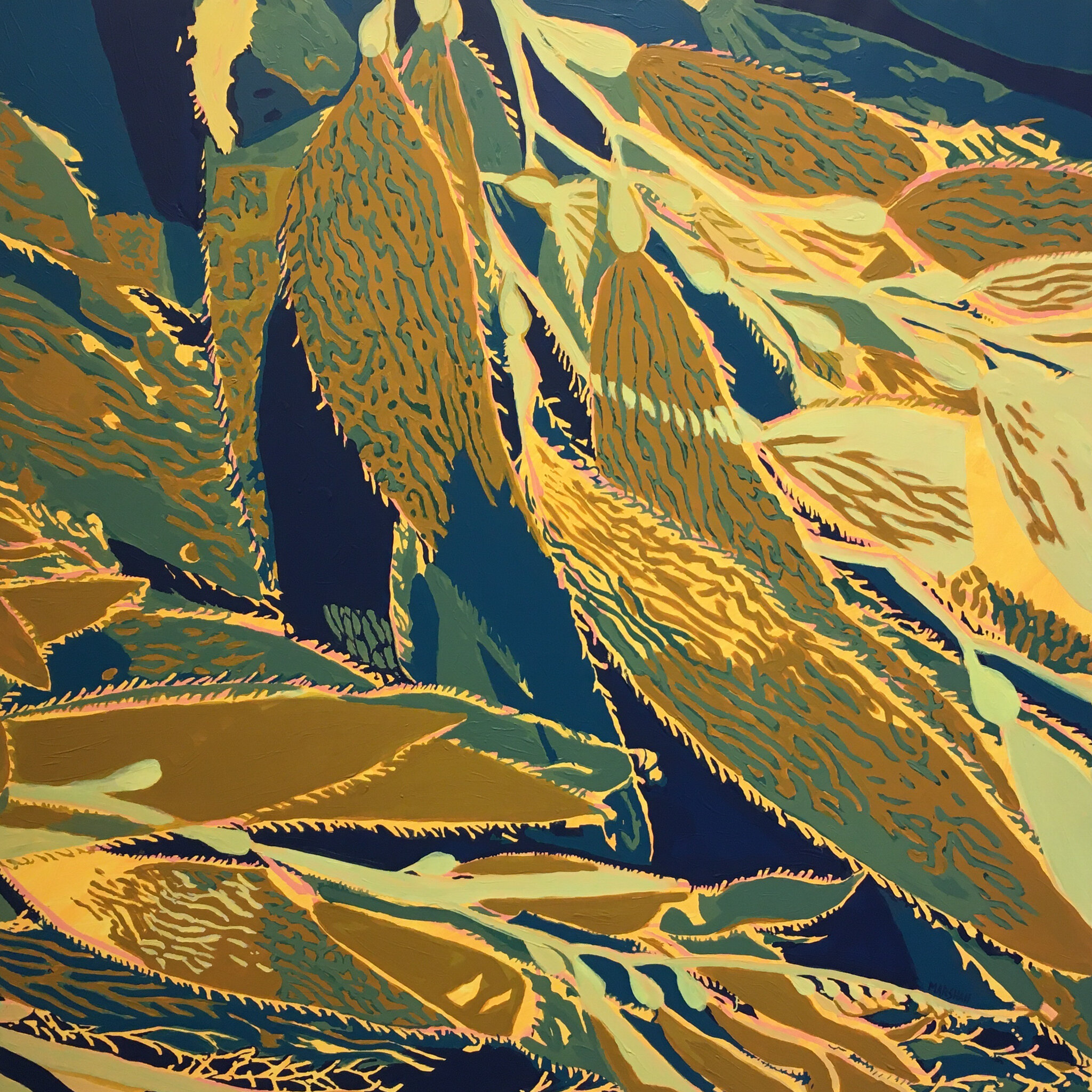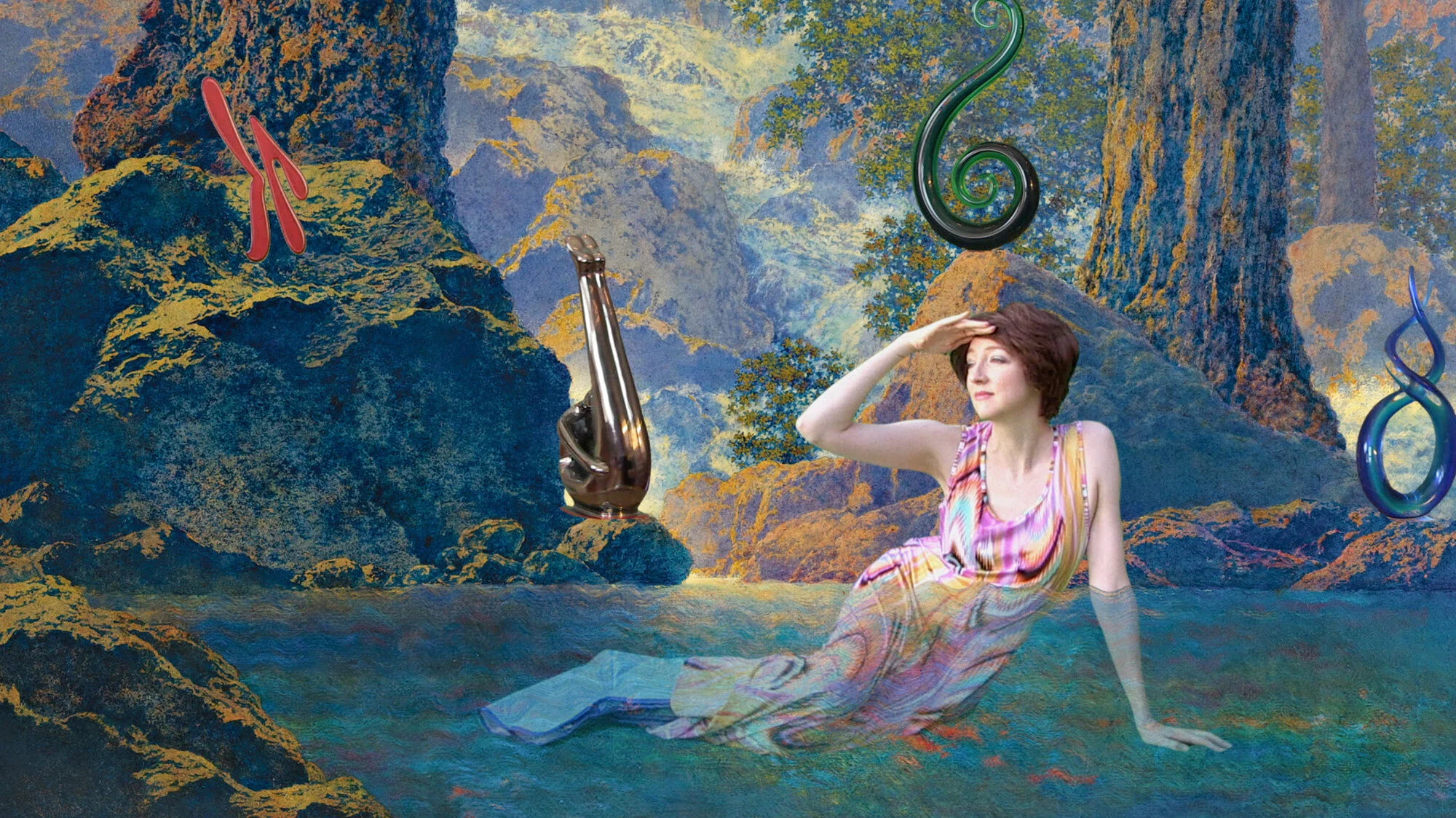Secretly Planted: Serene Blumenthal and Marshall Sharpe, CSU Channel Islands
By Madeleine Ignon
Secretly Planted: Nature/Culture Musings is a two-person show that exhibits the work of Serene Blumenthal and Marshall Sharpe at California State University Channel Islands’ Napa Gallery.
At first glance, it appears that there is little beyond the theme of the natural world that connects Sharpe’s paintings and Blumenthal’s video work, sculptures and installations. But, like a slow-blooming plant, the themes and connections open to the viewer as she spends more time in the large, spare space.
Hanging between two ceiling beams towards the center of the room is the work I noticed first: an arresting sculptural piece by Blumenthal titled Sacred Flag/Product (2020): a large gold translucent textile punctured by jewels and thorns and suspended by a curved branch, bearing the repeated face of “maybe Theodora.”
Above images: Installations by Serene Blumenthal. Photos by Shana Moulton.
I love Blumenthal’s poetic and playful medium lists, which refer not only to the subject matter of the work but to the very nature of the artist’s process of collecting and foraging.
“I found this image in a junk store and was drawn to the bust of only her head with a broken nose,” the artist says. “On the back of the print it says ‘Maybe a bust of Theodora.’ Theodora was a Byzantine Empress who rose through ranks starting as a prostitute/ performer in the Hippodrome and becoming one of the most powerful women of her time. Something I am always thinking about is how women are often chiseled out of—defamed—from history. The man who chronicled her life wrote scathing things about her such as ‘she wished she had more orifices on her body to receive more pleasure at one time’ and other lewd and nasty things. Regardless of such misogynist treatments she used her sexuality, wit, and spirit to transform not only her reality but that of the whole Byzantium Empire.”
Blumenthal has a deft ability to join together the organic and manmade, the found and the foraged, the historical and the present.
To the right sits another of Blumenthal’s works, a delicately architectural installation made of plaster, fennel and other local plants that the artist harvested and curved into a series of differently-sized arches. The flora is anchored in pleasing plaster shapes, some of which are shaped to look like feet, both human and animal. One can easily conjure the image of a curious child wandering through the scene’s arches, surrounded by the powerful scent of wild fennel.
Above images: Installations by Serene Blumenthal. Photos by Marshall Sharpe.
To the left is a curious living sculpture: a large square of mossy plant life situated in an open platform the artist forged out of metal. The plants, almost breathing they look so alive and green, get their water from a source below: a plastic soap bottle donning a re-imagined, re-designed Dr. Bronner’s label. There is plenty to absorb in Blumenthal’s works, and one is rewarded by close, careful inspection. She is clearly interested in harnessing and harmonizing nature’s wildness, unfettered growth and beauty—without capturing it or trying to hold on too tightly.
In her statement, she quotes California architect Anthony Lumsden: “A tree…has no intention of relating to beauty, of being artistic. The tree…wasn't made for man.” She writes of her work: “The phrase the tree…wasn’t made for Man helps me think through this reality from a post-humanist lens. Moving beyond humanist sensibilities can breakdown the boundaries between self and other and perhaps, promote a coalescing of spirit and matter. We wake up, we breathe in unfathomable bits of dust particulate, of dirt, dander and pollen; yet we (for the most part) function. Or, as Donna Haraway explains: our DNA is stored in only 10 percent of our body—the rest is given over to bacteria. How much of “us” is really ours? This work at CSUCI explores the intersections of culture, history and thresholds of nature and what is considered ‘natural.’”
In contrast to the wildness and diversity of material in Blumenthal’s work, Sharpe’s diptych paintings that explore the Santa Barbara coast’s underwater kelp forests and his connection to the ocean speak a far more traditional, direct language of artmaking. His large, square works are situated at the edges of the gallery, and employ distinct and highly legible formal and conceptual methodologies. Sharpe quotes Abstract Expressionism (Kelp Forest Diptych After Janet Sobel), Pop Art and the stark graphic style of Alex Katz, and Gerhard Richter’s famous “blur” technique (Kelp Forest Diptych After Gerhard Richter).
Above images: Diptych by Marshall Sharpe. Courtesy the Artist.
Sharpe writes of his process: “In Kelp Forest Diptych After Janet Sobel, I used one of my own photographs as source material to create two acrylic-on-canvas paintings. In the first one, I studied Janet Sobel’s Milky Way painting to create a composition that references the cacophony of kelp blades on the surface of the water. Because Sobel used a blow drier to push the paint across the surface, I used a leaf blower to create similar mark-making on a larger scale. In the sister painting, I studied the simplicity of Alex Katz’s portraits to create a quieter composition using only five values. The large, empty spaces provide the viewer with a place of rest, referencing the stillness of the ocean.”
This new body of work is seemingly apolitical and self-referential but, by spending time painting colorful underwater scenes using an array of techniques, Sharpe is attempting to educate his viewers, citing that “much of California’s onshore kelp has already disappeared and in many places around the world over 95 percent of kelp forests have died.”
Both artists are clearly concerned with the health of the natural world and inspired by its offerings. The show is a diverse, interesting spectacle with many details to contemplate.
Secretly Planted: Nature/Culture Musings is on view January 28 to February 20 in CSUCI’s Napa Gallery at One University Drive, Camarillo.

